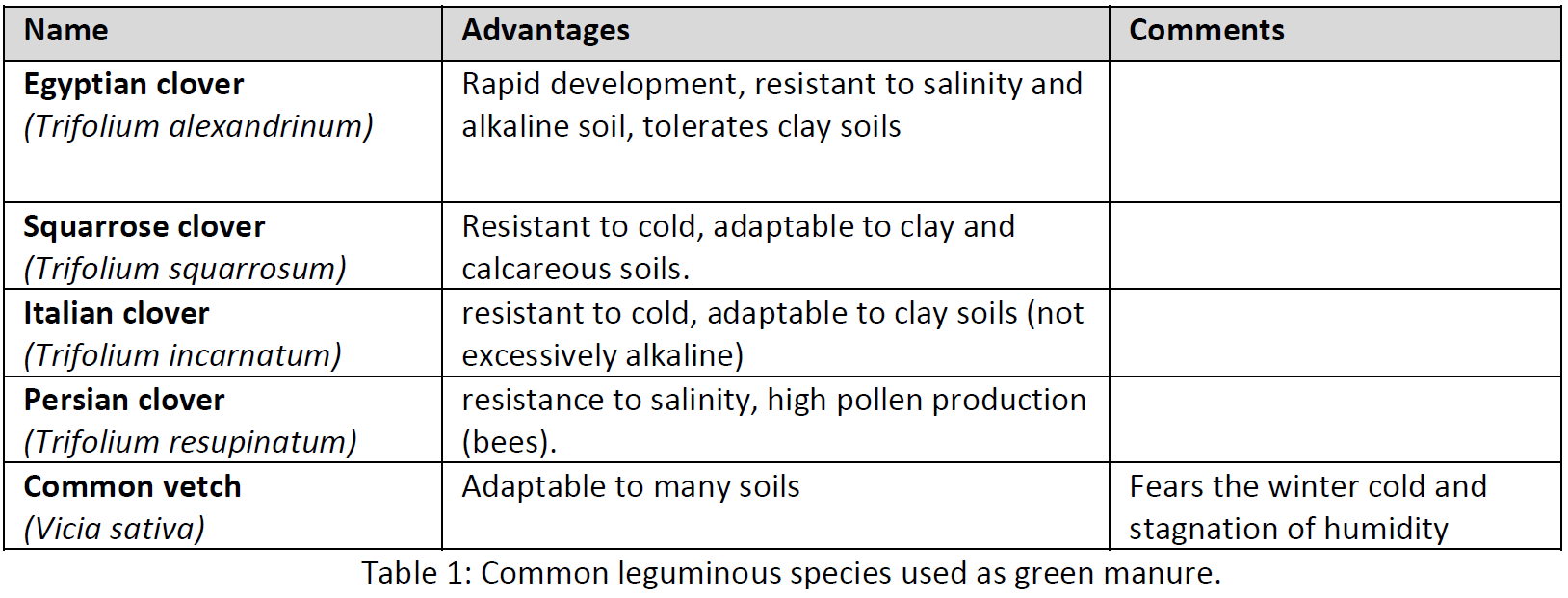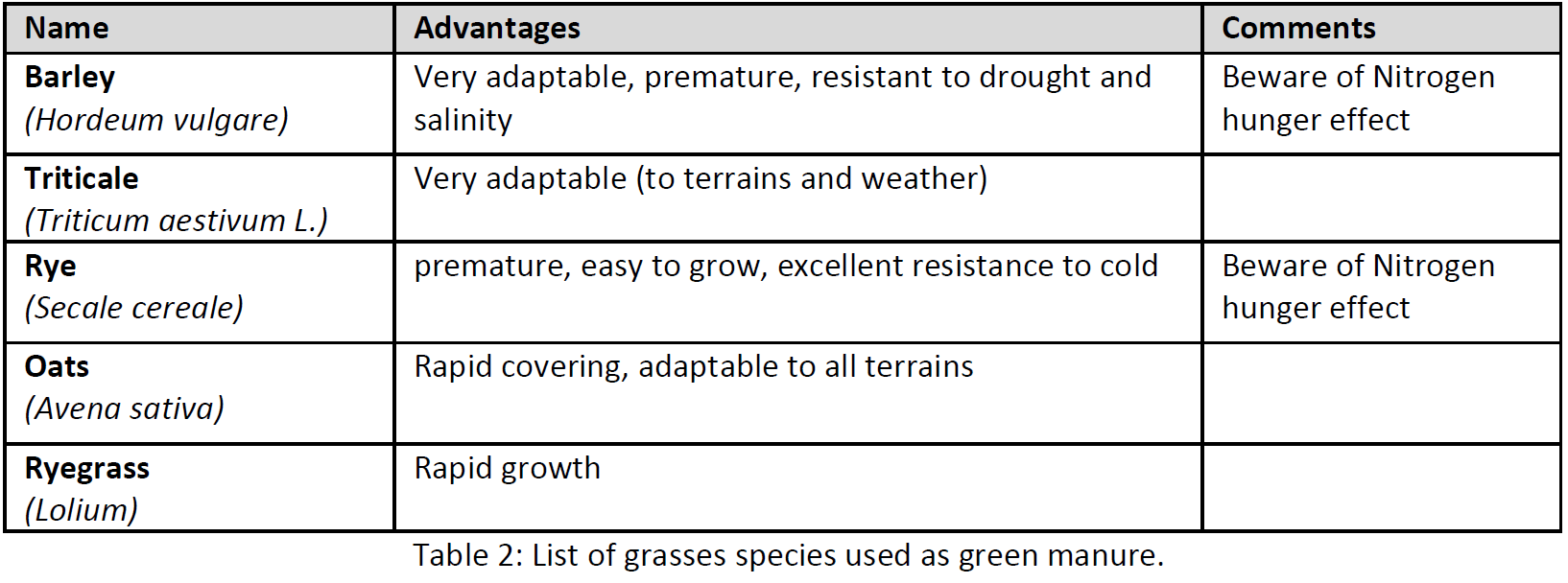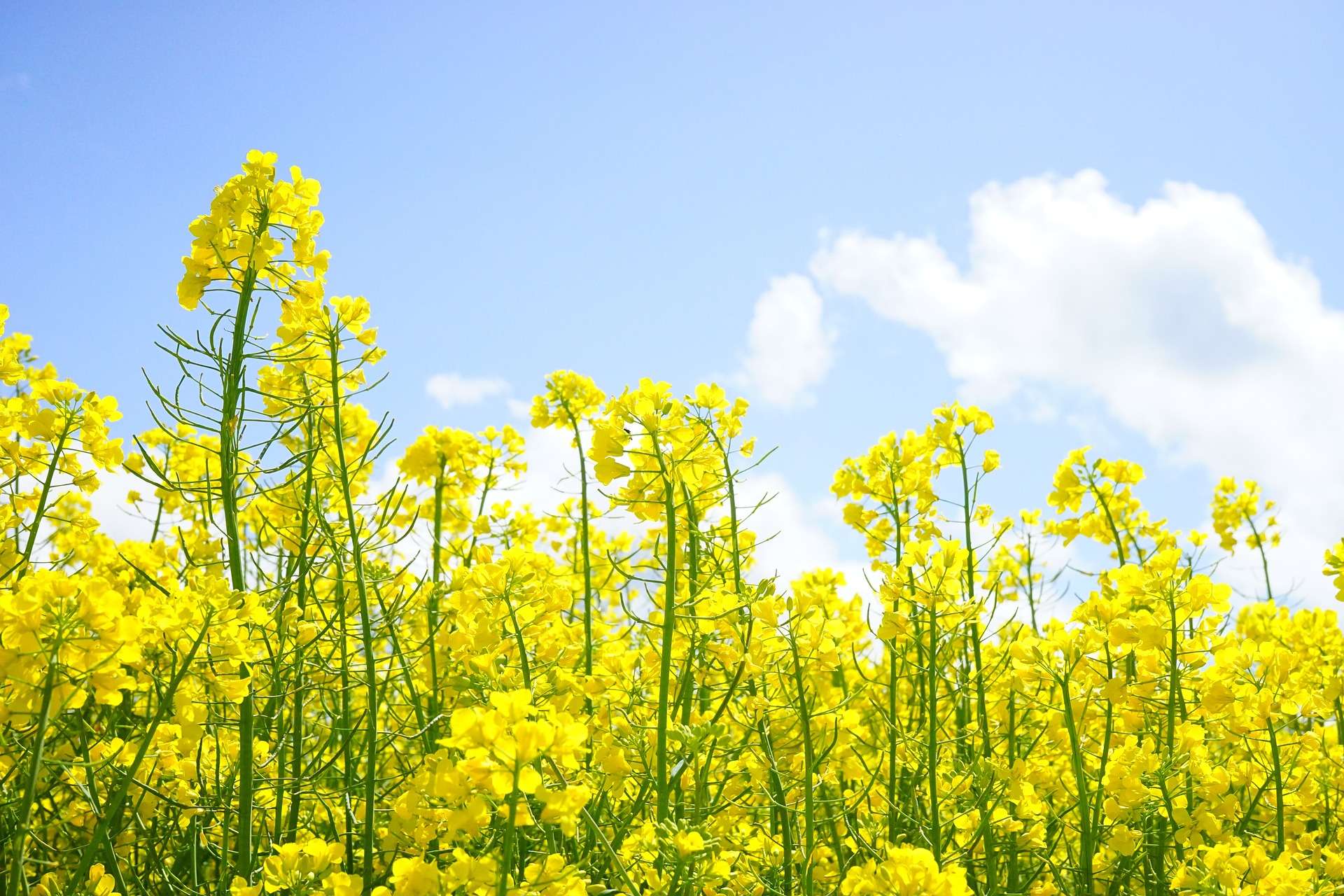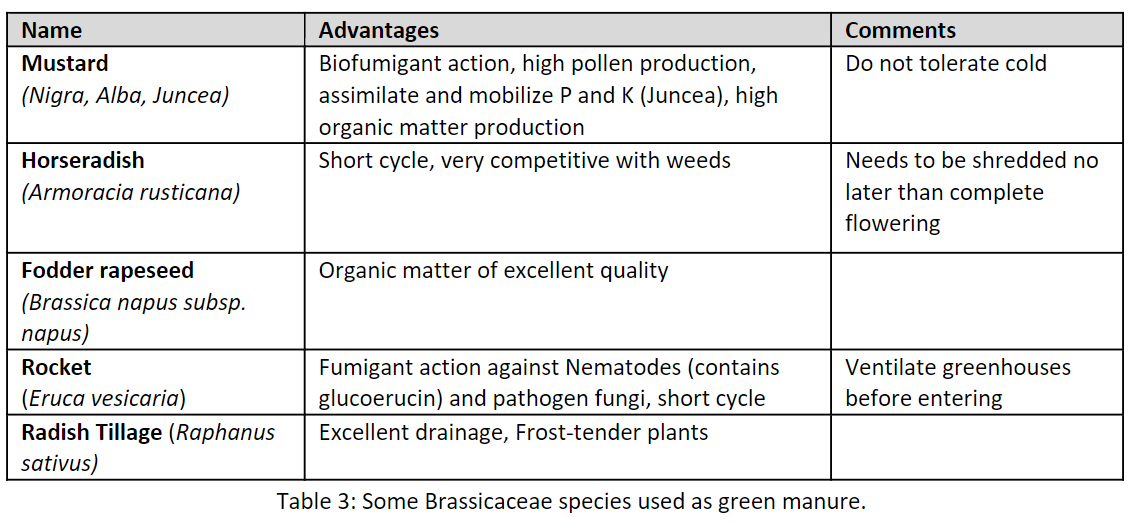Hot Topic
Green manure
great potential for organic farming
Green manuring is a way to achieve more sustainability in agriculture while reducing production cost at the same time. There are many reasons why this technique is worth considering for farmers worldwide. The key to success in green manuring: An intelligent combination of grasses and legumes to improve soil fertility. And this is exactly what the Naturland Academy's “Green Manure”-Seminar was about.
Maren Schulze & Thomas Holtz, Naturland e.V.
Service & Expertise
It increases the stable humus content, it can improve nitrogen availability in the soil – and it can be used to reduce pathogenic nematodes or to reduce soil erosion: Even though green manure was already a concept for the ancient Romans, it is more relevant today than ever in view of climate change and more sustainable agriculture.
Advantages of Green manuring
Alessio Capezzuoli is an Italian agronomist who specializes in pesticide-free gardening and is an expert on green manuring. He explains: “Green manuring is an agronomic practice that consists of sowing a herbaceous plant of pure or associated species, not to be harvested, but mulched and buried.” By enriching the soil with organic matter, this practice, if well-structured and managed, brings benefits to the following crop and improves soil fertility. In this way, green manuring affects the chemical, physical and biological factors of the soil and brings benefits in several key areas:
- Chemical advantages: green manure increases organic matter and thus the availability of organic nutrients. When used as a cover crop, it reduces nitrate leaching during the winter and rainy seasons. In addition, green manure from legumes can provide tens, if not hundreds, of kilogrammes of organic nitrogen when properly managed.
- Physical advantages: through allelopathy and shading, green manure keeps spontaneous weeds under control and can prevent their development and thus their proliferation. In addition, green manure combats soil erosion: the plant layer makes it harder for wind and rain to erode the soil. In addition, the organic matter in green manure stabilises the soil structure.
- Biological advantages: Root exudates and ploughed-in green manure provide food for living organisms in the soil such as earthworms and for the entire macro- and microbiotic component. And they are a key element when it comes to soil fertility.
However, green manuring is not a universal solution that can be applied in the same way on every farm. Different types of plants should be chosen depending on the location and farm structure. “There are different levels of slurry. The choice of mixture is important. You have to find species that give you maximum biomass," Alessio Capezzuoli clarifies. This means, for example, that one variety can be used for a three-month green manure application, while another is more suitable for a six-month green manure application. The best results have often been achieved with a mixture of plants rather than using just one species. Plants should be selected depending on the soil, season and water availability, duration, purpose of green manuring and farm machinery available on the farm. It is essential to observe the weeds growing spontaneously in the field, as these can be used as ecological bio-indicators (such as moist soil, shallow root system, nitrophilous species, etc.) and help in the selection process. A helpful database on green manures is linked at the end of the article.
The following strategies are particularly common:
Nitrogen increases and short term-fertility
Legumes are known for their ability to supply organic nitrogen to the soil in which they grow. Important when green manuring with legumes: the nitrogen is in the nodules of the root until the fruits or seeds start to grow. To increase the organic nitrogen content in the first 20 – 30 cm of the soil, the plants should therefore be mown and incorporated during the flowering period.
This practice provides organic matter and increases the organic nitrogen pool in the soil, thereby increasing the amount of mineral nitrogen available for subsequent crops. Green manuring from legumes can provide tens, if not hundreds, of kilogrammes of organic nitrogen per hectare if managed properly, reducing the need for external fertilisers and thus economic costs.
Important information: sometimes microbial inoculum of the soil is necessary (i.e., soybeans, Sulla etc.).

Nitrogen increases long term-fertility
Use the same procedure as described above, except that the plants can be mown when the pods have formed. The C/N ratio will be higher and the organic matter added to the soil will be more uniform than with the method described above. Biodegradation is directly related to cut size: the larger the pieces, the slower the reaction. A high organic matter content increases the fertility of the soil (as organic matter is rich in nutrients) and gives structure to the soil, improves water drainage on heavy soils and water retention on light soils. It also maintains a stable and resilient microbial community.
Organic matter and long term-fertility
Gramineae species (grasses) are rich in fiber and can be used to extract deeply hidden nutrients in our soils. The deep root system of herbaceous species can reach immobilized or “lost” nutrients and pass them on to the upper part of the plant. After mowing and incorporation, nutrients are transferred to the first 20 cm of soil, and are primarily bound to organic molecules that are available for future crops. Recent studies have shown that the availability of micronutrients is directly related to organic matter content. Graminaceous species should be mulched before or during the flowering period to avoid too high a C/N ratio and thus lower availability of mineral nitrogen. The same phenomenon occurs when graminaceous are sown as individual species rather than in a mixture. This phenomenon is known as the "nitrogen hunger" effect.

Soil fertility and structure improvers

Picture 1: Rapeseed Brassicaceae
Some Brassicaceae or Cruciferae species can penetrate deep into the soil, oxygenate deep layers, loosen compacted soil and drain excess water. These crops grow quickly and have a C/N ratio that lies between that of grasses and legumes. This allows the plants to release nutrients in shallower soil layers and quickly increase the soil's organic biomass. It is the ideal choice to improve the properties of thin sandy soils or to make clay soils light and aerated. See table 3 for a list of Brassicaceae species used for green manure.
The field radish, for example, is characterised by a large taproot. It penetrates up to 50 - 60 cm deep into the soil and creates a series of wide, closely spaced holes that are ideal for draining and structuring soils, even in heavy soils. The radish taproots are naturally dissolved by the winter frost, leaving them completely deactivated and soft in the soil, which is no obstacle to subsequent minimal tillage or direct sowing.
Some species of the Brassicaceae family showed biocide properties.

Biocide effects during rotting
Some green manure species can be used to reduce nematode populations. Eruca Sativa, for example, is a special rocket that grows up to 60 - 80 cm high. When mown immediately it releases some organic molecules that act as biocide against soil nematodes. If this rocket is used in greenhouses, you can close the jars/plastic film and wait a week to increase the biocidal effect. After that, the organic matter should be worked into the soil. Before entering the greenhouse, be sure to ventilate the area to ensure worker safety.
Spontaneous weeds control
Fresh, bare soil is the perfect place for spontaneous weeds to colonise. In addition, the organic matter contained in the soil is exposed to oxygen and is broken down. The perfect solution to protect the soil and prepare it for the next crop is not fallow but green manure. Green manuring, if well managed, suppresses the germination of spontaneous weeds due to shading and allelopathy and slowly reduces the seed pool naturally contained in the soil. This practise makes it possible to reduce the frequency of tillage and thus petrol consumption. The ideal species for controlling summer weeds are fast-growing, competitive species, better still if they are drought-resistant.
Note
The compatibility of green manure as a cover crop with the crop rotation of the main crops must be checked. It is possible to do this, for example, with the best4soil database (linked in the end of the article). Without a suitable plan, there is a risk of nematodes and pathogens entering the soil.
Would you like to learn more about green manure? The Naturland Academy held an online seminar on this topic with Alessio Capezzuoli. Alessio Capezzuoli has been working as a technician for many Italian farmers for many years. He studied agriculture at the University of Florence, and after some experiences in Spain and in the United States, he decided to specialize in organic agriculture. During those years, he worked on soil fertility using green manure.
You can find the recording of the webinar in English, Spanish and Italian here. Click here for the summary of the seminar.
This text is a translation. No guarantee can be given for the correctness.
NATURLAND ACADEMY:
On the subject of green manuring, the Naturland Academy has conducted an online seminar. You can watch the recorded video free of charge in the following languages: :
English: Green manure in horticulture: know them to appreciate them
Spanish: Abonos verdes en la horticultura: conocerlo para apreciarlo
Further information:
A helpful database on green manure:
www.orticolturabio.it
best4soil database
Naturland Standards on production
Helpful videos:
Video of “Crop Rotation Best Practices” and access to factsheet; Best4Soils (in multiple languages)
Video “Green Manures and Cover Crops, practical information”; Best4Soils (in multiple languages)



